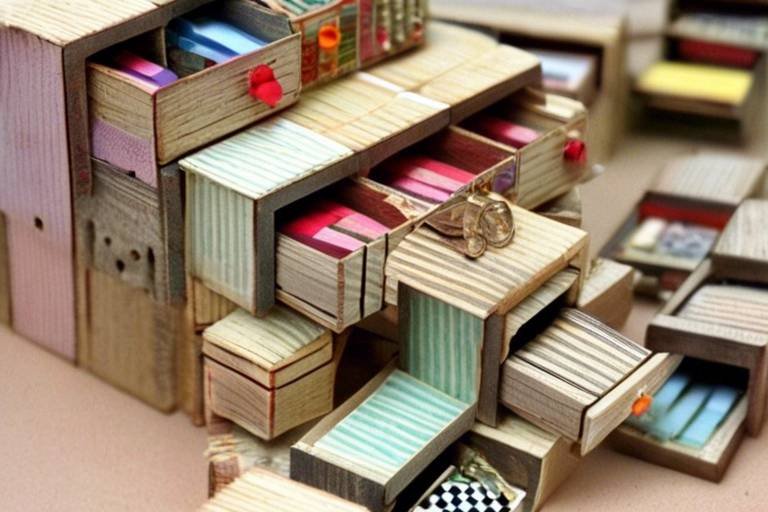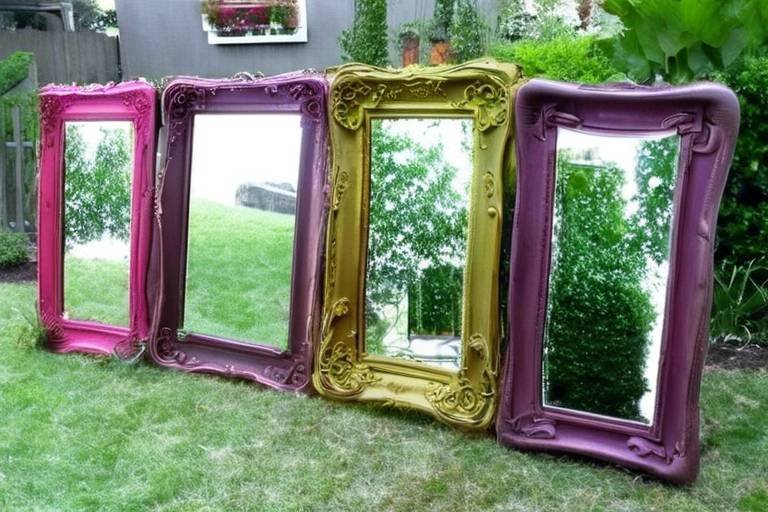Turning Upcycling into a Profitable Business
Have you ever looked at an old piece of furniture and thought, "That could be something amazing again?" Well, you're not alone! Upcycling is all about taking what others consider waste and transforming it into something new and valuable. It's not just a creative outlet; it's a fantastic opportunity to build a profitable business while contributing to a more sustainable world. In this article, we will explore the ins and outs of turning your upcycling passion into a thriving enterprise. From understanding the concept of upcycling to identifying lucrative ideas and marketing strategies, we’ll cover everything you need to kick-start your journey.
So, what exactly is upcycling? It’s the art of taking discarded materials and repurposing them into products of higher quality or value. Think of it as a creative rescue mission for items that would otherwise end up in a landfill. The term "upcycling" has gained traction over the past few decades, but the practice itself dates back centuries. People have always found ways to make the most out of what they have. Today, the importance of sustainability is more pronounced than ever, as consumers are increasingly aware of their environmental impact. This shift in mindset has created a ripe market for upcycled products. Not only does upcycling help reduce waste, but it also allows you to tap into a growing trend that values sustainability.
When it comes to launching your upcycling business, the first step is to brainstorm creative ideas that resonate with potential customers. The beauty of upcycling is that the possibilities are nearly endless! Here are a few avenues you might explore:
- Furniture Restoration: Transforming old furniture into stylish, functional pieces can appeal to a wide range of consumers.
- Fashion Upcycling: Revamping old clothes into trendy fashion items is a hit among eco-conscious shoppers.
- Home Decor: Creating unique home decor items from discarded materials can attract customers looking for one-of-a-kind pieces.
Finding the right idea is crucial for success, but it’s equally important to ensure there’s a market for your products. This brings us to the next key point: market research.
Conducting thorough market research is essential to identify trends and consumer preferences in the upcycling industry. Start by examining what types of upcycled products are currently popular. Are people leaning towards furniture, fashion, or home decor? Utilize tools like Google Trends or social media platforms to gauge interest. Additionally, consider conducting surveys or focus groups to gather direct feedback from potential customers. This information will help you tailor your products to meet market demands.
Understanding your target audience is crucial. Different demographics are drawn to upcycled products for various reasons. For instance, millennials and Gen Z consumers often prioritize sustainability and unique designs, making them prime targets for upcycled fashion and decor. Meanwhile, older generations may appreciate the nostalgia associated with restored furniture. By identifying your audience, you can create marketing messages that resonate with their values and preferences.
Analyzing your competitors can provide valuable insights into the upcycling market. Take note of their strengths and weaknesses. What are they doing well? Where do they fall short? This analysis can help you carve out your niche and differentiate your offerings. For example, if you notice that your competitors focus heavily on furniture, you might consider specializing in fashion or home decor to stand out.
Strong branding is vital for any business, especially in the eco-friendly sector. Your brand identity should reflect your commitment to sustainability and creativity. Consider creating a memorable logo, a catchy tagline, and a cohesive color scheme that aligns with your brand's values. Engaging storytelling can also enhance your brand’s appeal. Share the journey of your products, from discarded materials to beautiful new items. This connection can resonate deeply with eco-conscious consumers.
Once you have your products and branding in place, it’s time to market them effectively. Utilize a mix of online and offline strategies to reach your audience. Social media platforms like Instagram and Pinterest are excellent for showcasing visually appealing upcycled products. Create engaging posts that highlight the transformation process and the sustainability aspect of your offerings. Additionally, consider setting up an online store or using marketplaces like Etsy to expand your reach.
Social media is a powerful tool for connecting with potential customers. Use platforms like Instagram to share high-quality images of your products and behind-the-scenes content. Engage with your audience through polls, Q&A sessions, and by responding to comments. Building a community around your brand can foster loyalty and encourage word-of-mouth marketing.
Collaborating with other businesses, influencers, or local organizations can enhance your visibility and credibility. Look for opportunities to partner with eco-friendly brands or participate in local markets and events. These collaborations can introduce your products to new audiences and establish your brand as a trusted name in the upcycling community.
Every business venture comes with its challenges, and the upcycling industry is no exception. One common obstacle is sourcing quality materials. It can be tricky to find sustainable materials that meet your standards while keeping costs low. Establishing relationships with local businesses or recycling centers can help streamline this process.
Finding quality materials for upcycling can be challenging. Consider reaching out to local businesses for their discarded items or partnering with recycling centers. You might also explore online platforms where people give away or sell unwanted materials. This approach not only helps you save costs but also builds community connections.
Educating consumers about the benefits of upcycled products is essential. Many people are still unaware of the environmental impact of their purchasing decisions. Use your marketing efforts to communicate the value and sustainability of your offerings. Consider creating informative content, such as blog posts or videos, that highlight the benefits of upcycling and your commitment to sustainability.
Q: What types of products can I upcycle?
A: You can upcycle a wide range of items, including furniture, clothing, home decor, and even electronics. The key is to be creative and think outside the box!
Q: How can I find materials for upcycling?
A: Look for materials at local thrift stores, garage sales, or online marketplaces. You can also ask friends and family for items they no longer need.
Q: Is there a market for upcycled products?
A: Absolutely! The demand for sustainable and unique products is growing. Many consumers are actively seeking out eco-friendly options.
Q: How can I market my upcycled products effectively?
A: Utilize social media platforms, create an online store, and consider participating in local markets or events to showcase your products.

Understanding Upcycling
Upcycling is not just a trendy buzzword; it's a transformative approach to sustainability that has gained traction in recent years. Essentially, upcycling refers to the process of taking waste materials or unwanted products and creatively converting them into new items of higher quality or value. Imagine turning an old wooden pallet into a chic coffee table or transforming discarded glass bottles into stunning light fixtures. This innovative method not only reduces waste but also breathes new life into materials that would otherwise end up in landfills.
The concept of upcycling dates back several decades, but its roots can be traced to the early 20th century when people began to realize the importance of reusing materials. Over time, as environmental concerns have escalated, the practice has evolved into a movement that emphasizes sustainability and creativity. In today's economy, where consumers are increasingly aware of their environmental footprint, upcycling has become a beacon of hope. It's a way to combat the throwaway culture that has plagued society for far too long.
But why is upcycling so vital in today's world? Here are a few reasons:
- Environmental Impact: Upcycling significantly reduces the amount of waste that ends up in landfills, which is crucial for protecting our planet.
- Resource Conservation: By repurposing existing materials, we conserve natural resources that would otherwise be used to create new products.
- Economic Opportunity: Upcycling presents a unique business opportunity for entrepreneurs looking to tap into the growing demand for sustainable products.
As consumers become more eco-conscious, they are increasingly drawn to brands that reflect their values. This shift in consumer behavior creates a ripe opportunity for entrepreneurs who can effectively communicate the benefits of upcycled products. Whether it’s through storytelling, showcasing the creative process, or highlighting the environmental benefits, the narrative surrounding upcycled goods can significantly influence purchasing decisions.
In conclusion, understanding upcycling is not just about recognizing its definition or history; it's about embracing a mindset that values sustainability and creativity. As we move forward, the importance of upcycling will only continue to grow, making it an essential component of both individual and collective efforts towards a more sustainable future.

Identifying Profitable Upcycling Ideas
When it comes to upcycling, the creative possibilities are virtually endless! However, not all ideas are created equal; some can transform into lucrative ventures while others may fizzle out. So, how do you sift through the creative clutter to find those golden opportunities? The answer lies in understanding your market, tapping into your creativity, and recognizing consumer trends. Think of it as hunting for treasure in a sea of discarded items—sometimes, the most valuable gems are hidden in plain sight.
To kickstart your journey, consider the types of materials you have access to. Upcycling can involve anything from old furniture to fabric scraps, and even discarded electronics. By focusing on materials that are readily available to you, you can minimize costs and maximize your profit margins. For instance, if you have a knack for woodworking, transforming old pallets into chic furniture could be a perfect niche for you. Alternatively, if you’re crafty with textiles, turning worn-out clothing into stylish tote bags might just be your calling.
Another crucial factor is identifying consumer preferences. People are increasingly drawn to unique, one-of-a-kind items that tell a story. This is where your creativity can shine! Think about what products are currently trending in the market. For example, handmade home decor items, eco-friendly fashion, and sustainable gifts are all hot commodities right now. By aligning your upcycling projects with these trends, you can create products that not only appeal to consumers but also stand out in a crowded marketplace.
Here are some profitable upcycling ideas to consider:
- Furniture Restoration: Revamping old furniture pieces can yield high returns, especially if you add a modern twist.
- Fashion Upcycling: Transforming vintage clothing into fashionable wearables can attract eco-conscious fashionistas.
- Home Decor: Items like glass jars can be upcycled into beautiful candle holders or plant pots.
- Art and Crafts: Use scrap materials to create unique art pieces that resonate with the sustainable lifestyle.
Keep in mind, though, that successful upcycling is not just about creativity; it’s also about practicality. Before diving headfirst into a project, conduct some market research. Look at what similar businesses are doing and identify gaps in the market. For instance, if you notice a demand for sustainable pet products, consider creating upcycled pet toys from discarded fabrics. This approach not only fills a market need but also appeals to environmentally conscious pet owners.
In conclusion, identifying profitable upcycling ideas requires a blend of creativity, market awareness, and an understanding of consumer preferences. By focusing on the materials at hand, aligning with current trends, and conducting thorough market research, you can turn your upcycling passion into a successful business venture. Remember, every piece you transform has the potential to not only be a source of income but also a statement about sustainability and creativity.
Q: What materials are best for upcycling?
A: The best materials for upcycling are those that are readily available to you, such as old furniture, textiles, glass, and even electronics. Look for items that can be easily transformed into something new and useful.
Q: How do I know if my upcycled product will sell?
A: Conduct market research to understand consumer trends and preferences. Look at what similar products are selling well and identify gaps in the market that your upcycled items can fill.
Q: Is upcycling a profitable business?
A: Yes, upcycling can be a profitable business if you find the right niche, create quality products, and effectively market them to your target audience.
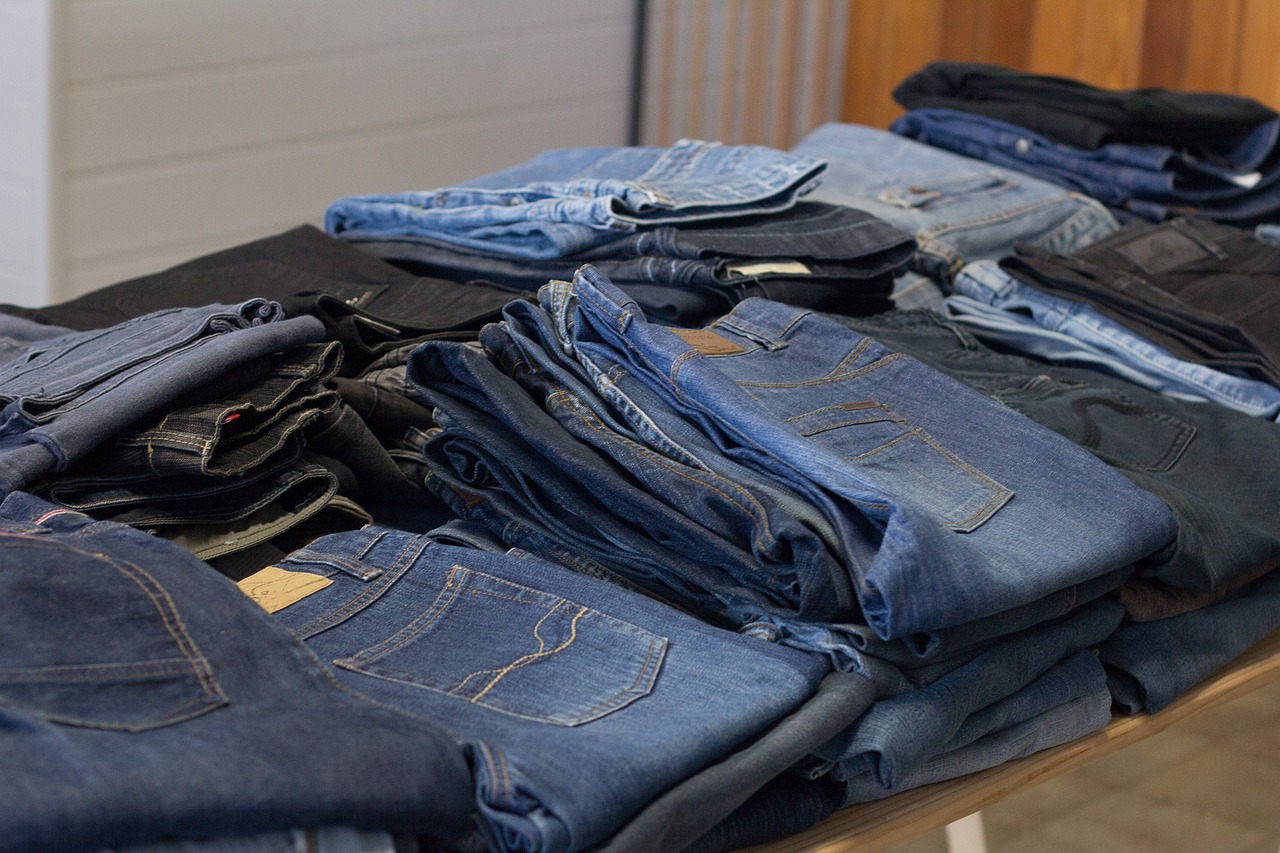
Market Research and Trends
In the dynamic world of upcycling, understanding market research and trends is not just a good idea—it's a necessity. Imagine trying to navigate a ship without a compass; that’s what launching an upcycling business without proper research feels like. The first step is to dive deep into the current market landscape. What are consumers looking for? What products are trending? And how can you position your upcycled goods to meet these demands? By conducting thorough market research, you can identify key trends that will help you tailor your offerings to what buyers truly want.
One effective method of conducting market research is through surveys and focus groups. These tools allow you to gather direct feedback from potential customers. Ask questions about their buying habits, preferences for materials, and what eco-friendly practices they value. This kind of engagement not only helps you understand customer needs but also builds a community around your brand. Additionally, analyzing social media trends can provide insights into what types of upcycled products are gaining popularity. Platforms like Instagram and Pinterest are gold mines for discovering emerging styles and consumer interests.
Furthermore, keeping an eye on industry reports can illuminate broader trends affecting the upcycling market. For example, a recent report indicated that the demand for sustainable products has surged by over 70% in the last five years. This statistic is a clear indicator that consumers are increasingly prioritizing sustainability in their purchasing decisions. To capitalize on this trend, consider focusing on eco-friendly materials and processes that resonate with environmentally conscious consumers.
Another critical aspect of market research is understanding the competitive landscape. Who are your competitors? What are they doing well, and where are their weaknesses? By analyzing competitors, you can identify gaps in the market that your business can fill. For instance, if you notice that most upcycling brands focus on furniture, you might explore other areas like fashion or home decor. This not only helps you carve out a unique niche but also minimizes direct competition.
As you gather data, it’s essential to keep track of your findings in an organized manner. Using a
| Trend | Description | Potential Product Ideas |
|---|---|---|
| Eco-Friendly Materials | Growing demand for products made from sustainable sources | Upcycled bags, furniture from reclaimed wood |
| Minimalism | Consumers are seeking simple, functional designs | Minimalist home decor, clothing with clean lines |
| Personalization | Desire for unique, custom-made items | Custom upcycled jewelry, personalized home accessories |
In conclusion, effective market research is the backbone of any successful upcycling business. By tapping into consumer insights, analyzing industry trends, and understanding your competition, you can position your products to meet the evolving demands of the market. Remember, in the world of upcycling, knowledge is power. The more informed you are, the better equipped you'll be to create products that not only sell but also resonate with the values of your target audience.
- What is the best way to conduct market research for an upcycling business? Surveys, focus groups, and social media analysis are effective methods.
- How can I identify trends in the upcycling industry? Keeping track of industry reports, social media trends, and consumer feedback will help you stay informed.
- Why is understanding competition important? Knowing your competitors helps you identify market gaps and differentiate your products.
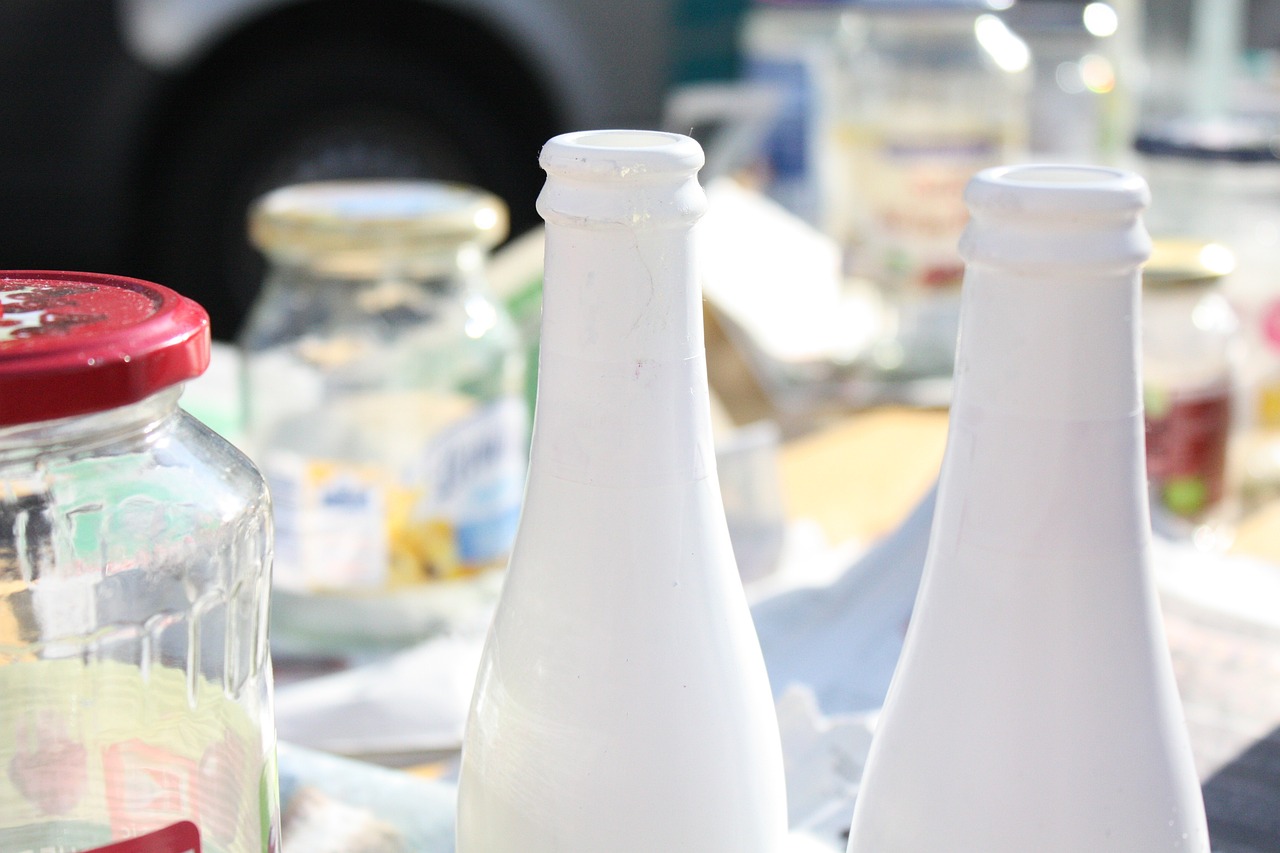
Target Demographics
Understanding your target audience is crucial when venturing into the upcycling business. Not all consumers are created equal, and recognizing the unique characteristics of different demographics can make a significant difference in your marketing strategy. The beauty of upcycling is that it appeals to a wide range of individuals who are increasingly conscious of their environmental impact and are looking for sustainable alternatives to traditional products.
First and foremost, consider the **millennial** and **Gen Z** consumers. These groups are often at the forefront of the sustainability movement, driven by a strong desire to make ethical purchasing decisions. They are not just looking for products; they want stories behind them. They are drawn to brands that resonate with their values, particularly those that promote **eco-friendliness** and **social responsibility**. This demographic values authenticity and transparency, making it essential for upcycling businesses to share their journey and the positive impact of their products.
Another significant demographic to consider is **eco-conscious parents**. This group is increasingly seeking out sustainable options for their families. They are likely to invest in upcycled products that not only look good but also contribute to a healthier planet for their children. These consumers are often willing to pay a premium for items that are safe, non-toxic, and environmentally friendly. Therefore, highlighting the safety and sustainability of your upcycled products can be a game-changer in your marketing efforts.
Moreover, the **home decor** and **fashion** enthusiasts are always on the lookout for unique, one-of-a-kind pieces. Upcycled products often fit the bill perfectly, offering something different from mass-produced items. These consumers appreciate creativity and craftsmanship, so showcasing the artistry and innovation behind your upcycled creations can attract their attention. Utilizing platforms like Instagram and Pinterest to share visually appealing content can help capture this demographic's interest.
Lastly, don't overlook the **businesses and organizations** that prioritize sustainability. Many companies are looking for eco-friendly promotional items or office decor that aligns with their corporate social responsibility goals. By targeting these organizations, you can tap into a lucrative market that values upcycled products for their sustainability and uniqueness. Offering bulk discounts or custom options can be a compelling strategy to engage this demographic.
In summary, recognizing the diverse target demographics for your upcycled products is essential for crafting effective marketing strategies. By understanding the motivations and values of these groups, you can tailor your messaging and product offerings to meet their needs. Remember, it’s not just about selling a product; it’s about connecting with consumers who share a passion for sustainability and creativity.
- What is upcycling? Upcycling is the process of transforming waste materials into new products of higher quality or value, often through creative and innovative methods.
- Who are the primary consumers of upcycled products? Primary consumers include eco-conscious millennials, Gen Z, parents looking for sustainable options, home decor enthusiasts, and businesses prioritizing sustainability.
- How can I effectively market my upcycled products? Utilize social media, collaborate with influencers, and participate in community events to increase visibility and engage with potential customers.
- What challenges might I face in the upcycling business? Common challenges include sourcing quality materials, educating consumers about the benefits of upcycled products, and establishing a strong brand presence.

Competitive Analysis
In the bustling world of upcycling, understanding your competition is not just a good idea—it's essential for carving out your niche. Think of it as being in a vast forest where each tree represents a different business. To thrive, you need to know which trees are towering over you and which ones are just saplings. Conducting a thorough competitive analysis allows you to identify the strengths and weaknesses of your competitors, giving you the insights needed to stand out.
Start by identifying who your direct competitors are. These are the businesses that offer similar upcycled products and target the same audience. Dive deep into their product offerings, pricing strategies, and marketing tactics. Ask yourself questions like: What unique value do they provide? How do they engage with their customers? What platforms are they using to sell their products? This exploration will help you understand the landscape of the upcycling market.
Once you've gathered information on your competitors, create a comparison table to visualize their strengths and weaknesses. This table can include various factors such as product range, pricing, customer reviews, and social media presence. For example:
| Competitor | Product Range | Price Point | Customer Reviews | Social Media Engagement |
|---|---|---|---|---|
| EcoCrafts | Furniture, Decor | $$ | ★★★★☆ | High |
| GreenGenius | Accessories, Apparel | $$$ | ★★★★★ | Medium |
| Reclaimed Treasures | Art, Home Goods | $ | ★★★☆☆ | Low |
This table not only highlights the competitive landscape but also helps you pinpoint gaps in the market. For instance, if you notice that most competitors focus on furniture but neglect accessories, this could be a golden opportunity for you to fill that gap. Additionally, analyzing customer reviews provides insights into what consumers love or dislike about existing products, allowing you to tailor your offerings effectively.
Furthermore, consider the branding strategies of your competitors. What messaging do they use to connect with their audience? Are they emphasizing sustainability, creativity, or affordability? Understanding their branding can help you develop a unique identity that resonates with eco-conscious consumers. Remember, in the upcycling business, authenticity is key; consumers are drawn to brands that genuinely reflect their values.
Lastly, don't forget to keep an eye on emerging trends within the industry. The upcycling market is constantly evolving, and staying updated on new materials, techniques, and consumer preferences will give you a competitive edge. Subscribe to industry newsletters, join online forums, and attend trade shows to keep your finger on the pulse of what's happening.
In summary, a comprehensive competitive analysis is your roadmap to success in the upcycling business. By understanding your competitors, identifying market gaps, and crafting a unique brand identity, you'll be well on your way to establishing a profitable venture that stands out in a crowded marketplace.
- What is upcycling? Upcycling is the process of transforming waste materials into new products of higher quality or value.
- How can I find upcycling ideas? Look for materials that are often discarded, explore local thrift shops, and tap into your creativity to brainstorm new uses for old items.
- Why is competitive analysis important? It helps you understand your market, identify gaps, and differentiate your brand from others.
- What are effective marketing strategies for upcycled products? Utilize social media, collaborate with influencers, and participate in community events to promote your products.

Effective Branding Strategies
When it comes to turning your upcycling venture into a profitable business, branding is not just an afterthought; it's the beating heart of your enterprise. Think of your brand as the story that connects your products to your customers. It’s what makes your offerings memorable and gives them a personality. To create a brand that resonates with eco-conscious consumers, you need to focus on a few key strategies.
First and foremost, define your brand's mission and values. What do you stand for? Are you committed to reducing waste, promoting sustainable living, or perhaps supporting local artisans? Clearly articulating your mission will help you attract like-minded customers who share your passion for sustainability. For instance, if your focus is on reducing plastic waste, let that shine through in your branding materials, website, and social media.
Next, consider the visual elements of your brand. Your logo, color palette, and packaging should reflect the essence of upcycling. Use earthy tones, recycled materials, and designs that evoke a sense of nature and sustainability. This not only appeals to eco-conscious consumers but also reinforces your brand message. A well-designed logo can become a symbol of your values, making it instantly recognizable.
Another effective strategy is to create a storytelling approach in your marketing efforts. People love stories, especially ones that resonate with their values. Share the journey of your products—from the discarded items to the beautiful, upcycled creations they become. Use your website, social media, and even product tags to tell these stories. For example, if you create furniture from reclaimed wood, share the history of the wood and the craftsmanship involved in the transformation. This emotional connection can significantly enhance customer loyalty.
Moreover, engaging with your community is crucial. Attend local events, markets, or fairs where you can showcase your products and share your brand's mission. This face-to-face interaction not only builds trust but also creates a personal connection with your audience. Consider hosting workshops or demonstrations on upcycling techniques; this not only promotes your brand but also educates others about the importance of sustainability.
In addition, leverage social media to amplify your brand presence. Platforms like Instagram and Pinterest are ideal for visually-driven businesses. Share high-quality images of your products, behind-the-scenes content, and customer testimonials. Engage with your audience by responding to comments and messages, and encourage them to share their own experiences with your products. This not only builds a community around your brand but also fosters a sense of belonging among your customers.
Lastly, always seek feedback from your customers. Their insights can help you refine your brand and product offerings. Consider using surveys or social media polls to gather opinions on new designs or potential product lines. This not only shows that you value their input but also helps you stay aligned with their preferences.
In summary, effective branding strategies for your upcycling business revolve around clearly defining your mission, creating a strong visual identity, telling compelling stories, engaging with your community, leveraging social media, and continuously seeking customer feedback. By focusing on these elements, you can build a brand that not only stands out in the marketplace but also fosters a loyal customer base passionate about sustainability.
- What is upcycling? Upcycling is the process of transforming waste materials into new products of higher quality or value.
- How can I start an upcycling business? Begin by identifying materials you can source, brainstorm creative product ideas, and develop a brand around your mission and values.
- What are effective marketing strategies for upcycled products? Utilize social media, engage in community events, and collaborate with local businesses to enhance visibility.
- Who is the target audience for upcycled products? Eco-conscious consumers, millennials, and those interested in sustainable living are prime demographics for upcycled goods.
- What challenges might I face in the upcycling business? Common challenges include sourcing quality materials, educating consumers, and competing with mass-produced alternatives.
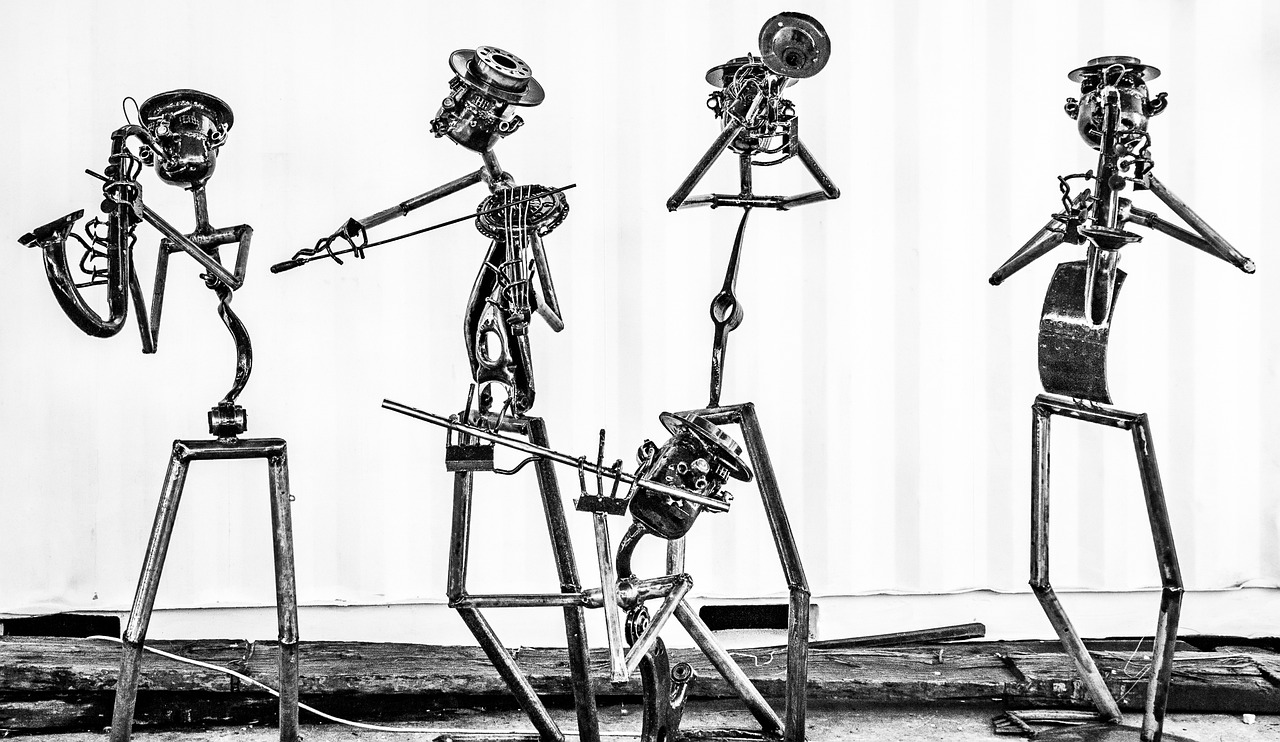
Marketing Your Upcycled Products
Marketing your upcycled products effectively can be the difference between a thriving business and one that struggles to make an impact. In today’s eco-conscious market, consumers are increasingly looking for sustainable options, and upcycled products fit perfectly into that niche. But how do you get your creations in front of the right audience? Well, it all starts with a solid marketing strategy that highlights the unique value of your products while appealing to the values of your target demographic.
One of the most powerful tools at your disposal is social media. Platforms like Instagram, Pinterest, and Facebook are ideal for showcasing visually appealing upcycled items. By sharing high-quality images and engaging stories about your products, you can create a connection with potential customers. Think about it: when you see a beautifully crafted item made from reclaimed materials, doesn’t it spark a sense of curiosity and admiration? Use that to your advantage! Share behind-the-scenes processes, customer testimonials, and the story of how your products came to life.
But don’t stop at just posting pretty pictures. Engagement is key. Respond to comments, ask for feedback, and create polls to involve your audience in the decision-making process. This not only builds a community around your brand but also fosters loyalty. People love to feel like they are part of something bigger, especially when it comes to sustainability. By making them feel included, you encourage them to spread the word about your upcycled products.
Moreover, consider leveraging online marketplaces that focus on sustainable goods. Websites like Etsy or platforms dedicated to eco-friendly products can help you reach a broader audience that is already interested in what you have to offer. Ensure your product listings are optimized with relevant keywords to improve visibility. High-quality images, detailed descriptions, and clear pricing can make a significant difference in attracting potential buyers.
Another effective strategy is to participate in community events. Farmers' markets, craft fairs, and eco-friendly expos are excellent venues to showcase your upcycled products. Not only do these events allow you to meet potential customers face-to-face, but they also provide an opportunity to tell your story and explain the benefits of upcycling. People are often more inclined to purchase when they can connect with the maker and understand the ethos behind the products.
Lastly, don’t underestimate the power of collaborations and partnerships. Teaming up with other local businesses, influencers, or even non-profit organizations can help you tap into new audiences. For instance, consider partnering with a local café that shares your sustainability values. You could create a special line of upcycled products that they sell in their store, or perhaps host a workshop together. These collaborations can enhance your brand visibility and credibility, making it easier for consumers to trust and engage with your products.
In summary, marketing your upcycled products requires a blend of creativity, community engagement, and strategic partnerships. By utilizing social media, participating in local events, and collaborating with like-minded businesses, you can effectively promote your unique offerings while contributing to a more sustainable future.
- What is upcycling? Upcycling is the process of transforming waste materials into new products of higher quality, often with artistic or functional improvements.
- How can I effectively market my upcycled products? Utilize social media, engage with your audience, participate in community events, and consider partnerships with other businesses.
- What platforms are best for selling upcycled products? Online marketplaces like Etsy, local craft fairs, and eco-friendly expos are excellent options for selling upcycled goods.
- How do I find my target audience? Conduct market research to understand consumer preferences and behaviors, and tailor your marketing strategies accordingly.

Leveraging Social Media
In the digital age, social media has become a powerhouse for businesses, and upcycling ventures are no exception. Imagine being able to transform not just materials, but also your brand's visibility and customer engagement through platforms like Instagram, Facebook, and Pinterest. These platforms are not just for sharing cute cat videos; they are vibrant marketplaces where your upcycled products can shine. The key is to **create compelling content** that resonates with your audience and showcases the uniqueness of your products.
Start by identifying which platforms your target demographic frequents. For instance, if you’re targeting a younger audience, platforms like TikTok and Instagram might be your best bet. On the other hand, Facebook could be ideal for reaching a broader audience, including those who appreciate handcrafted and sustainable products. Once you know where to focus your efforts, it’s time to get creative!
Engaging storytelling is your best friend here. Share the story behind each upcycled item—how it was made, what materials were used, and the journey it took to become a finished product. This not only adds value but also connects with consumers on an emotional level. People love to support brands that have a purpose, and showcasing your commitment to sustainability can set you apart from competitors. Consider using high-quality images and videos to capture the transformation process, as visuals can significantly boost engagement rates.
Moreover, consider implementing **user-generated content (UGC)** into your strategy. Encourage your customers to share photos of your products in their homes or in use. This not only builds a community around your brand but also acts as free advertising. You could even run contests or giveaways that incentivize customers to post their experiences with your products. When they tag your business, it increases your visibility and can attract new followers who share similar values.
Another effective strategy is to collaborate with influencers who align with your brand's ethos. Look for eco-conscious influencers who are passionate about sustainability and upcycling. These partnerships can help you reach a wider audience and lend credibility to your brand. When influencers showcase your products, it’s like having a trusted friend recommend them, which can significantly impact purchasing decisions.
Finally, don’t underestimate the power of **hashtags**. Research popular hashtags related to upcycling and sustainability to increase the discoverability of your posts. Hashtags like #Upcycled, #SustainableLiving, and #EcoFriendly can connect your content to a larger conversation happening online. Just remember to keep it relevant—using too many unrelated hashtags can dilute your message.
In conclusion, leveraging social media effectively can transform your upcycling business from a small venture into a recognized brand. By creating engaging content, utilizing UGC, collaborating with influencers, and maximizing the use of hashtags, you can build a loyal community of customers who not only buy your products but also advocate for your brand. So, are you ready to take your upcycling business to the next level through social media?
Q: How can I effectively showcase my upcycled products on social media?
A: Use high-quality images and videos, tell the story behind each product, and engage with your audience through comments and messages. Consider using Instagram Stories and Reels for dynamic content.
Q: What social media platforms are best for promoting upcycled products?
A: Platforms like Instagram, Pinterest, and Facebook are particularly effective for visual products. TikTok is also gaining traction for creative storytelling and product showcases.
Q: How can I encourage customer engagement on social media?
A: Run contests, encourage user-generated content, and respond to comments and messages promptly. Creating a sense of community around your brand can enhance engagement.
Q: Should I collaborate with influencers? How do I choose the right ones?
A: Yes, collaborating with influencers can increase your reach. Look for influencers who align with your brand values and have a genuine interest in sustainability and upcycling.
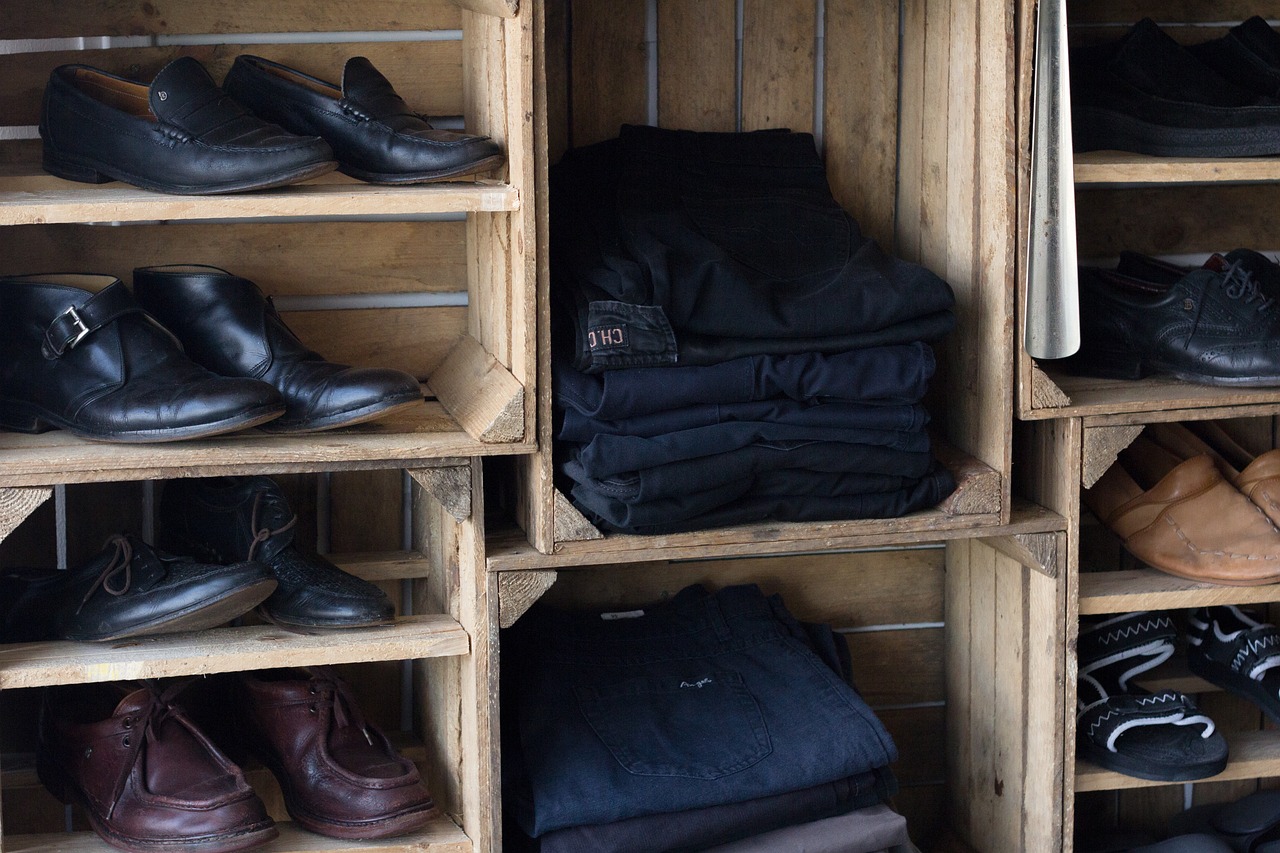
Collaborations and Partnerships
When it comes to turning your upcycling venture into a thriving business, one of the most effective strategies is to forge . Imagine trying to climb a mountain alone versus having a team of skilled climbers by your side; the latter not only makes the journey easier but also enriches the experience. In the world of upcycling, partnering with like-minded businesses, local artists, or even influencers can significantly enhance your brand's visibility and credibility.
Consider this: when you collaborate, you’re not just pooling resources; you’re also tapping into each other’s networks. For example, teaming up with a local café that shares your passion for sustainability can create a win-win situation. They could display your upcycled products, while you promote their eco-friendly practices. This kind of synergy not only attracts customers who value sustainability but also builds a community around your shared values.
Moreover, collaborations can take various forms. You might engage in co-branding initiatives, where two brands come together to create a unique product that combines elements from both. Think of a jewelry line made from upcycled materials, partnered with a fashion designer who uses sustainable fabrics. This not only broadens your reach but also appeals to a wider audience, showcasing the versatility of upcycled products.
Another avenue to explore is partnerships with local organizations or non-profits focused on environmental conservation. By aligning your business with a cause, you elevate your brand's purpose and authenticity. This could involve donating a portion of your sales to support local environmental projects or organizing community clean-up events. Such initiatives not only resonate with eco-conscious consumers but also create a positive impact, making your brand a part of something bigger.
In addition, leveraging social media influencers who are passionate about sustainability can amplify your message. Influencers have the power to turn their followers into customers through authentic storytelling. By sending them some of your upcycled products, you could gain exposure to a whole new audience that values eco-friendly practices. Remember, it's not just about selling a product; it's about telling a story that resonates with consumers.
To make the most out of collaborations, consider the following tips:
- Identify Synergies: Look for partners who share your values and target audience.
- Communicate Clearly: Establish clear goals and expectations to ensure a smooth partnership.
- Engage Your Audience: Involve your customers in the collaboration process through social media or events.
- Measure Success: Track the performance of your partnerships to understand what works and what doesn’t.
Ultimately, successful collaborations and partnerships can propel your upcycling business to new heights, creating a ripple effect that benefits not just you, but the community and environment as well. By working together, you can amplify your message, reach new customers, and contribute to a more sustainable world.
- What is upcycling? Upcycling is the process of transforming waste materials into new products of higher quality, often with a creative twist.
- How can I find partners for my upcycling business? Look for businesses or individuals who share similar values and target audiences. Networking events, social media, and local community groups are great places to start.
- What are the benefits of collaborating with other businesses? Collaborations can enhance visibility, share resources, and create unique products that attract a wider audience.
- How can I leverage social media for my upcycling business? Use social media to showcase your products, share your story, and engage with your audience. Collaborating with influencers can also help expand your reach.
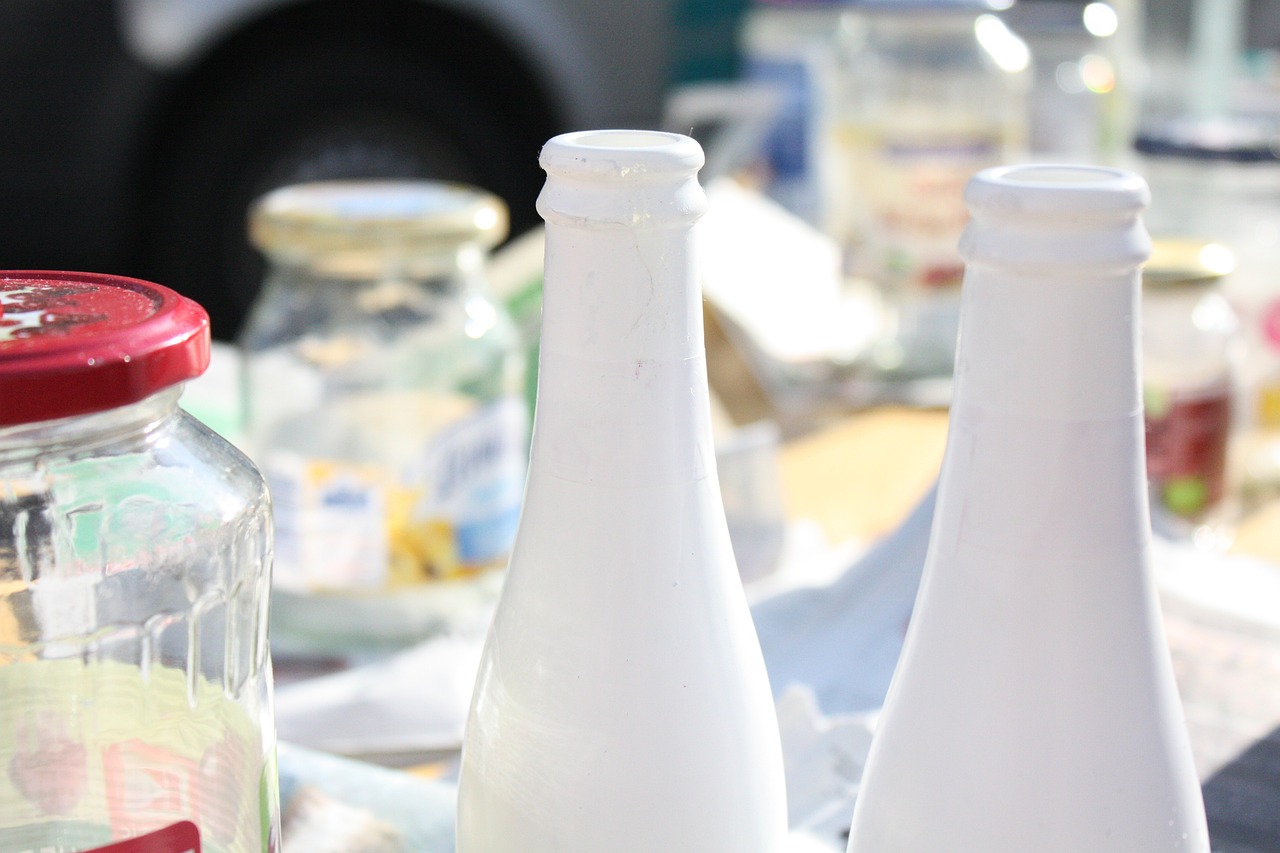
Challenges in the Upcycling Business
Every venture comes with its own set of challenges, and the upcycling business is no exception. While the idea of transforming waste into valuable products is incredibly appealing, entrepreneurs often find themselves navigating a complex landscape filled with obstacles. One of the primary challenges is sourcing materials. Finding quality materials that are not only sustainable but also cost-effective can be a daunting task. Many entrepreneurs start with the best intentions but soon realize that the availability of suitable materials can be inconsistent. This inconsistency can lead to production delays and increased costs, which can be detrimental to a fledgling business.
Another significant hurdle is consumer education. Many potential customers are still unaware of the benefits of upcycled products. In a market flooded with mass-produced goods, convincing consumers to choose upcycled items requires a strategic approach. It’s essential to communicate the value of sustainability and the unique stories behind each product. For instance, highlighting how a piece of furniture was crafted from reclaimed wood can resonate with eco-conscious consumers, but it requires effective marketing and storytelling.
Moreover, competition in the upcycling space is growing. As the trend towards sustainability gains momentum, more businesses are entering the market. This influx can lead to saturation, making it challenging for new entrants to carve out a niche. To stand out, businesses must not only offer unique products but also create a strong brand identity that resonates with their target audience. This means understanding what makes your products different and communicating that effectively.
Additionally, managing customer expectations can be tricky in the upcycling business. Since upcycled products often come from reclaimed materials, they may have imperfections or variations that are different from mass-produced items. While this uniqueness can be a selling point, it can also lead to dissatisfaction if customers are not adequately informed. Clear communication about what to expect in terms of quality and appearance is crucial.
Lastly, scaling the business can present its own set of challenges. As demand for upcycled products grows, entrepreneurs may struggle to keep up with production while maintaining quality. Finding reliable suppliers and developing efficient production processes becomes essential. Entrepreneurs must also be prepared to adapt to changing market demands and consumer preferences, which can be unpredictable.
In summary, while the upcycling business offers a unique opportunity to combine creativity with sustainability, it’s essential to be aware of the challenges that lie ahead. By proactively addressing these issues, entrepreneurs can not only survive but thrive in this exciting and evolving market.
- What is upcycling? Upcycling is the process of creatively reusing waste materials to create new products of higher quality or value.
- How can I start an upcycling business? Begin by researching market trends, identifying potential products, and sourcing sustainable materials. Create a business plan that outlines your goals and strategies.
- What are the benefits of upcycled products? Upcycled products are often more sustainable, unique, and environmentally friendly compared to mass-produced alternatives.
- How do I market my upcycled products? Utilize social media, collaborate with influencers, and engage in community events to raise awareness and promote your products.
- What challenges might I face in the upcycling business? Common challenges include sourcing materials, educating consumers, managing competition, and scaling production while maintaining quality.

Sourcing Materials
Sourcing materials for your upcycling business can feel like searching for buried treasure, but with the right strategies, it can be both rewarding and cost-effective. The key is to be resourceful and creative in finding materials that others might overlook. Many entrepreneurs find that the best sources of materials are often right under their noses, whether it's in their own homes, local thrift stores, or even community recycling centers. By tapping into these resources, you not only reduce costs but also contribute to sustainability, which is a core value in the upcycling movement.
One effective approach is to establish relationships with local businesses that generate waste materials. For instance, restaurants often discard items like glass jars, wooden pallets, and fabric scraps that can be transformed into unique products. By reaching out and proposing a mutually beneficial arrangement, such as taking their waste off their hands, you can build a reliable source of materials. Additionally, consider collaborating with local artisans or makers who may have leftover supplies from their projects. This not only helps you source materials but also fosters a sense of community.
Another avenue to explore is online marketplaces and social media groups dedicated to upcycling and sustainability. Platforms like Facebook and Instagram often have community groups where members share resources, ideas, and even surplus materials. By joining these groups, you can network with like-minded individuals and discover new sourcing opportunities. Don't underestimate the power of local events, such as flea markets or craft fairs, where you can connect with vendors who may have excess materials they are willing to sell or trade.
When sourcing materials, it's essential to keep an eye out for quality. You want to ensure that the items you collect can be transformed into products that are not only appealing but also durable. This means inspecting items for damage and ensuring they meet your quality standards. Sometimes, it might require a bit of creativity to see the potential in what others consider waste. For example, an old wooden chair can be stripped down and repurposed into a stylish bench or a set of coasters.
To help streamline your sourcing process, consider creating a material sourcing plan. This plan can outline your preferred sources, the types of materials you're interested in, and the methods you'll use to acquire them. Here's a simple table to illustrate how you might organize your sourcing efforts:
| Source | Type of Material | Contact Method | Notes |
|---|---|---|---|
| Local Thrift Store | Furniture, Fabric | In-person, Phone | Regular visits for new stock |
| Restaurants | Glass Jars, Wood | Email, In-person | Propose waste collection |
| Community Recycling Center | Mixed Materials | Visit, Phone | Check for special events |
| Social Media Groups | Craft Supplies | Online Messaging | Engage and network |
In conclusion, sourcing materials for your upcycling business is a journey that requires creativity, networking, and a bit of legwork. By exploring various avenues and establishing connections, you can build a sustainable supply chain that not only supports your business but also contributes to a greener planet. Remember, the materials you choose to work with will shape the success of your products, so take the time to find the right ones!
- What types of materials are best for upcycling?
Common materials include wood, fabric, glass, and metal. Look for items that are durable and have potential for transformation.
- Where can I find free or low-cost materials?
Check local thrift stores, community centers, and online marketplaces. Networking with local businesses can also yield great finds.
- How do I ensure the quality of upcycled materials?
Inspect items for damage and assess their usability. Choose materials that can withstand use and have aesthetic appeal.
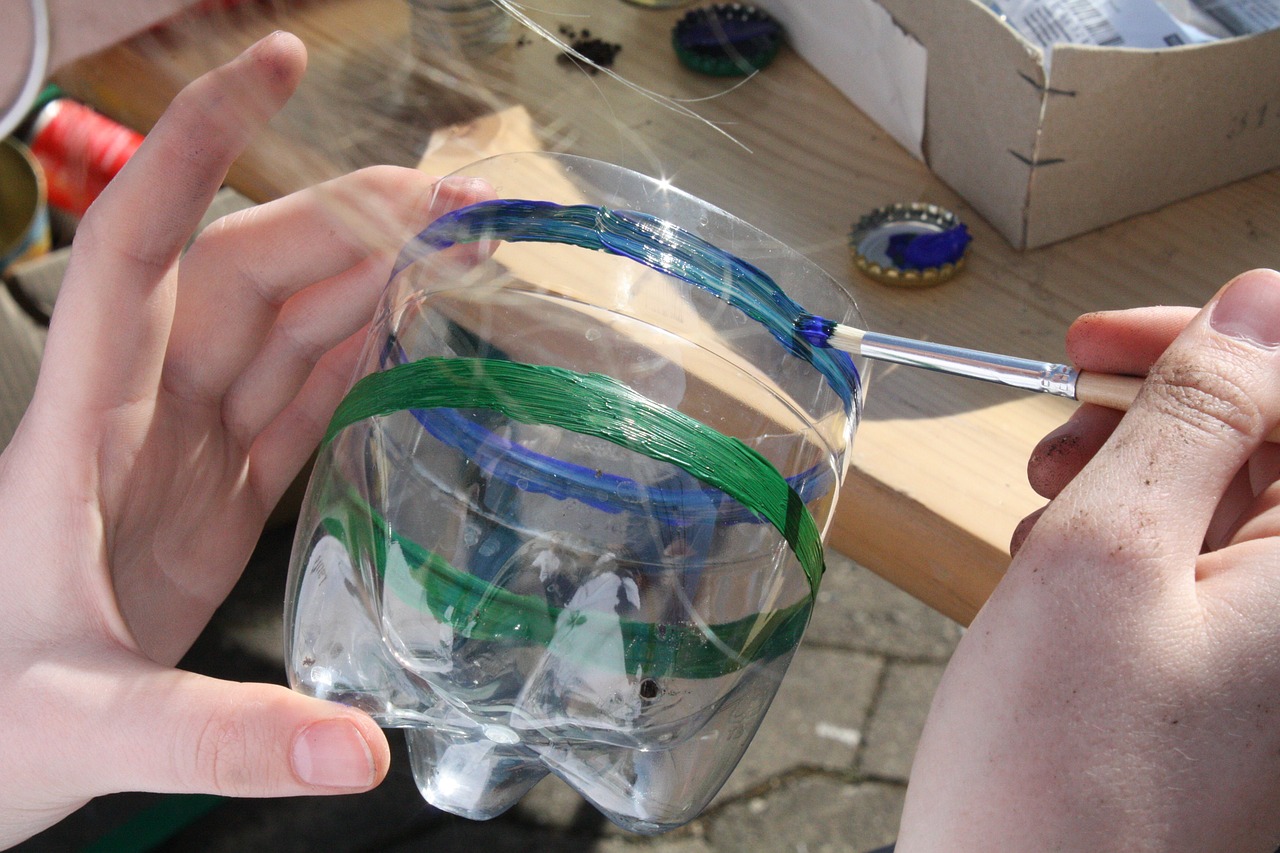
Consumer Education
In the world of upcycling, plays a pivotal role in bridging the gap between sustainable practices and market demand. Many potential buyers may not fully understand what upcycled products are or why they should consider them over new alternatives. This lack of knowledge can hinder sales, making it essential for businesses to engage in educating their consumers. By providing clear, accessible information, you can empower your audience to make informed decisions, ultimately driving sales and fostering a loyal customer base.
One effective way to educate consumers is through storytelling. Sharing the journey of an upcycled product—from the discarded item to its new life—can captivate potential buyers. For example, if you transform old wooden pallets into chic furniture, narrate how each piece has a unique story, highlighting its history and the craftsmanship involved. This not only adds value to the product but also connects the consumer emotionally, creating a sense of ownership and appreciation.
Moreover, consider creating informative content that outlines the environmental benefits of upcycling. Many consumers are increasingly eco-conscious, seeking ways to reduce their carbon footprint. Presenting statistics and facts about waste reduction, resource conservation, and the positive impact of choosing upcycled products can significantly influence purchasing decisions. You might include a table comparing the environmental impact of upcycled versus new products, showcasing how your offerings contribute to a more sustainable future.
| Aspect | Upcycled Products | New Products |
|---|---|---|
| Resource Usage | Reduces the need for new materials | Requires raw materials to be mined and processed |
| Waste Generation | Minimizes waste by repurposing | Contributes to landfill overflow |
| Carbon Footprint | Generally lower due to reduced production | Higher due to manufacturing processes |
Additionally, leverage social media and your website to disseminate educational content. Create engaging posts or videos that explain the upcycling process, share tips on how consumers can upcycle at home, or highlight the importance of sustainable choices. Remember, visuals are crucial; compelling images of your products in use can leave a lasting impression. Encourage your audience to share their own upcycling stories, creating a community around your brand that thrives on shared values.
Finally, consider hosting workshops or webinars that allow consumers to learn about upcycling firsthand. These interactive experiences not only educate but also foster a deeper connection with your brand. By providing hands-on opportunities, you can demystify the upcycling process and inspire others to incorporate sustainability into their lives.
- What is upcycling? Upcycling is the process of transforming waste materials into new products of higher quality or value, helping to reduce waste and promote sustainability.
- Why should I choose upcycled products? Upcycled products often have a lower environmental impact, as they repurpose existing materials and reduce the need for new resources.
- How can I learn more about upcycling? You can explore workshops, online courses, and social media content dedicated to upcycling to gain insights and practical skills.
Frequently Asked Questions
- What is upcycling, and how does it differ from recycling?
Upcycling is the creative process of transforming waste materials into new products of higher quality or value, while recycling involves breaking down materials to create new raw materials. Think of upcycling as giving a second life to items, enhancing their aesthetic or functional value, whereas recycling is more about processing materials back to their original form.
- How can I identify profitable upcycling ideas?
Identifying profitable upcycling ideas starts with market research. Look for trends in consumer preferences and consider what materials are readily available in your area. Pay attention to popular styles and needs in your community, and brainstorm how you can creatively repurpose items to meet those demands. Sometimes, the most unexpected materials can lead to the most unique products!
- Who are the target demographics for upcycled products?
Target demographics for upcycled products often include eco-conscious consumers, millennials, and individuals seeking unique home decor or fashion items. It's essential to understand their values and preferences, as they are more likely to support brands that prioritize sustainability and creativity. Conduct surveys or engage with your audience on social media to gather insights!
- What marketing strategies work best for promoting upcycled products?
Effective marketing strategies for upcycled products include leveraging social media platforms to showcase your creations, participating in local markets, and collaborating with influencers who share your values. Don't underestimate the power of storytelling—share the journey of your products and the positive impact of upcycling to connect with your audience emotionally.
- What challenges do entrepreneurs face in the upcycling business?
Entrepreneurs in the upcycling business often face challenges such as sourcing quality materials, educating consumers about the benefits of upcycled products, and standing out in a competitive market. However, these challenges can be navigated with creativity, persistence, and a strong brand message that resonates with your target audience.
- How can I educate consumers about the benefits of upcycled products?
Educating consumers can be done through engaging content, such as blog posts, social media campaigns, and workshops that highlight the environmental benefits and unique stories behind your products. Use visuals and infographics to make the information more digestible and shareable. Remember, people love a good story—so share yours!






